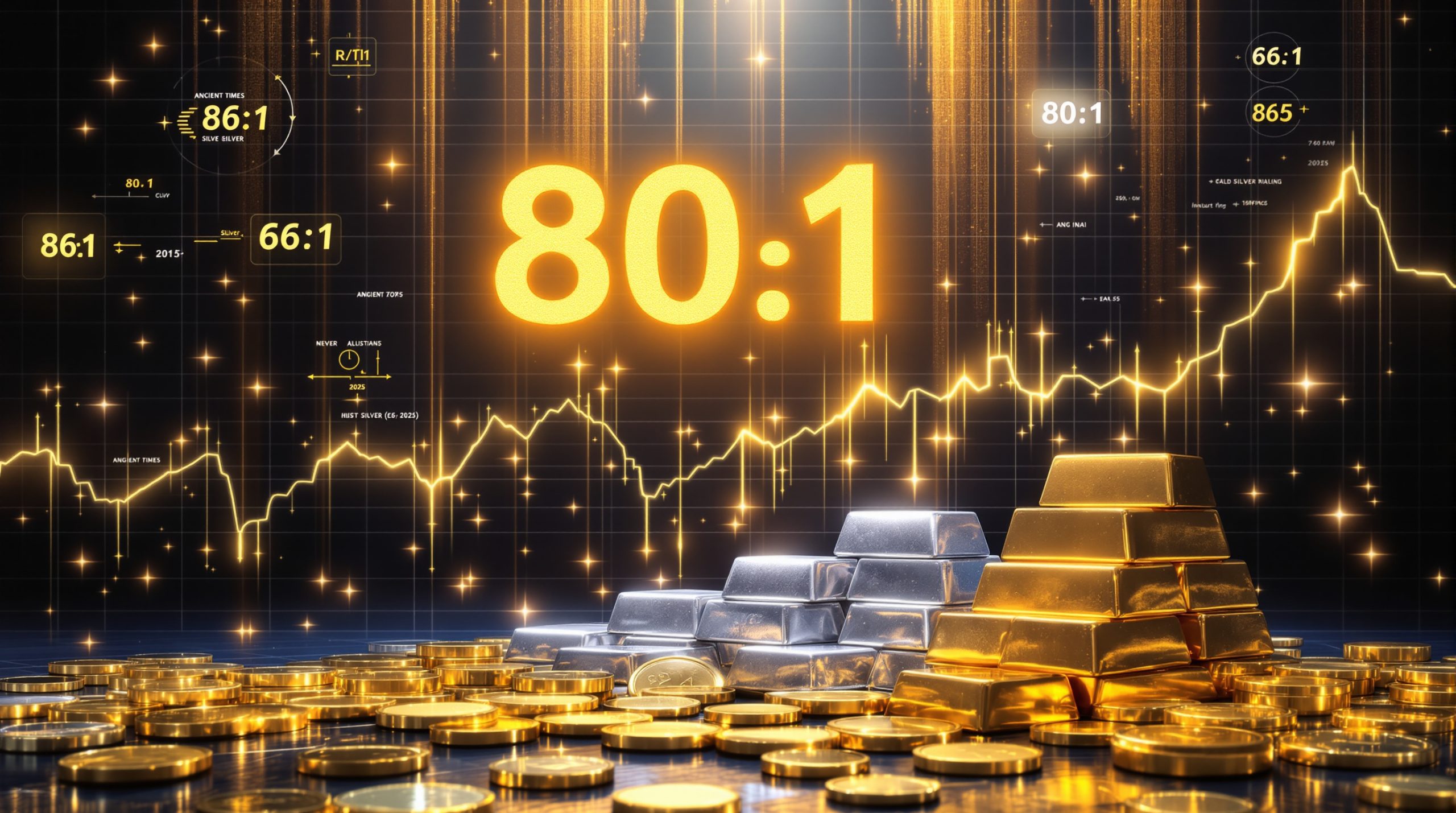What Is Price Manipulation in the Silver Market?
Silver price manipulation refers to deliberate actions taken by financial institutions and traders to artificially influence silver prices, typically to generate profits at the expense of regular investors. Unlike normal market movements driven by supply and demand, manipulation distorts silver's true market value through specific tactics designed to create artificial price movements.
How Price Manipulation Occurs in Silver Markets
The manipulation of silver markets involves sophisticated techniques that exploit market vulnerabilities and timing. These practices create disconnects between paper contracts and physical metal prices.
Spoofing stands as one of the most common manipulation tactics. This practice involves placing large orders with no intention of executing them, only to cancel moments later. The CFTC (Commodity Futures Trading Commission) formally defines spoofing as "bidding or offering with intent to cancel before execution," and has increased enforcement against this practice in recent years.
Another prevalent tactic is the strategic timing of large contract dumps during low-liquidity trading hours. As Bart Brands noted, "Selling 100,000 ounces at midnight guarantees lower prices… it's completely irrational market behavior." These large-scale sells during off-hours create artificial price drops that wouldn't occur in normal trading conditions.
The disconnect between paper and physical markets creates additional opportunities for manipulation. Paper contracts trade at volumes far exceeding available physical silver, allowing players with significant market power to influence prices without moving physical metal.
"The manipulation cycle is well-documented: buy physical silver, pump prices through paper markets, then dump contracts when liquidity is low to maximize profits." – Bart Brands, Gold Republic
Major Financial Institutions Involved in Silver Manipulation
Several major financial institutions have faced legal consequences for manipulating precious metals markets, with JP Morgan and Deutsche Bank featuring prominently in enforcement actions.
JP Morgan's alleged manipulation cycle included systematically:
- Accumulating physical silver
- Inflating prices through paper market activity
- Dumping paper contracts to profit from price movements
This pattern resulted in JP Morgan paying a record $920 million settlement to the CFTC in 2020 for market manipulation and spoofing activities in precious metals markets. The bank admitted to "a pattern of manipulation" spanning eight years.
Deutsche Bank faced similar legal consequences, paying $130 million in fines for spoofing in precious metals markets. Court documents revealed traders placing and quickly canceling orders to create artificial price movements.
The CFTC's 2021 Annual Report noted that 87% of precious metals market manipulation cases involved spoofing tactics by institutional traders, demonstrating the prevalence of these practices among major financial players.
Why Is Silver Price Manipulation Happening?
The manipulation of silver prices is driven by multiple factors ranging from direct profit motives to broader economic and monetary considerations.
Financial Motivations Behind Silver Price Suppression
Profit through cyclical price control represents the most straightforward motivation. Large institutions can generate substantial trading revenue by creating artificial volatility—buying physical silver at depressed prices, pumping values through controlled market activity, then profiting through well-timed paper contract sales.
Derivative market advantages provide another powerful incentive. Financial institutions holding substantial short positions in silver benefit directly from price suppression, as falling prices increase the value of these short contracts.
Investment banks generate significant trading desk revenue through manipulated volatility. By artificially creating price swings, these institutions can profit regardless of directional market movement—earning from both the upside and downside of price action they help orchestrate.
Broader Economic and Monetary Implications
Beyond direct profit motives, silver manipulation connects to deeper economic considerations, including silver's historical role as a monetary metal.
Silver has served as real money throughout civilization, from ancient Rome's denarius to America's silver dollars. As Bart Brands observed, "Suppressing silver's price props up fiat currencies… there's a moral motive to indoctrinate generations into thinking silver is worthless."
This connection between silver and monetary confidence creates incentives for those benefiting from the current fiat system to minimize silver's perceived value. World Bank data shows global M2 money supply growing at an average annual rate of 6.4% over the past decade, while silver prices have remained relatively flat despite increasing industrial demand.
Psychologically, sustained price suppression affects public perception of silver's value. After decades of volatile but largely range-bound prices, many investors view silver purely as an industrial commodity rather than monetary insurance—precisely the outcome that benefits fiat currency stability.
"When you understand silver's true role in monetary history, the motivation for manipulation becomes clear. It's not just about trading profits—it's about maintaining confidence in unbacked currencies." – Precious metals analyst
What Evidence Suggests Silver Price Manipulation?
Evidence of silver price manipulation comes from both technical market analysis and formal regulatory findings.
Technical Market Anomalies
Irregular price movements during off-hours trading represent one of the most visible signs of manipulation. These patterns include sharp, sudden price drops occurring when market liquidity is lowest—typically during Asian trading hours or weekend markets.
Analysis of trading data reveals instances of massive contract dumps at strategically disadvantageous times. In natural markets, large sellers seek maximum liquidity to achieve the best price. However, manipulation involves intentionally selling when liquidity is low to magnify price impact. The CFTC documented cases where traders placed orders exceeding 100,000 ounces during traditionally illiquid hours.
Price behavior often appears disconnected from supply-demand fundamentals. For example, silver prices fell significantly in early 2024 despite manufacturing sector growth and increased solar panel production—both major sources of industrial silver demand.
Statistical analysis has identified patterns where price movements show greater volatility during specific periods when manipulation commonly occurs. These patterns diverge significantly from random distribution models that would characterize truly free markets.
Legal and Regulatory Findings
Formal regulatory actions provide compelling evidence of manipulation beyond market analysis.
The CFTC and Department of Justice have brought numerous enforcement actions against major financial institutions. JP Morgan's $920 million settlement in 2020 stands as the largest for precious metals manipulation, with the bank admitting to "a pattern of manipulation" spanning eight years.
Court documents detail specific "spoofing" cases, where traders place and quickly cancel orders to create artificial price movements. Deutsche Bank paid $130 million in fines for similar activities, with specific traders named in legal proceedings.
These regulatory findings have prompted significant market reforms, including enhanced surveillance systems and stricter penalties for manipulative behavior. However, critics argue these measures remain insufficient given the scale of the markets and the profits available through manipulation.
How Does the Gold-Silver Ratio Indicate Potential Manipulation?
The gold-silver ratio analysis provides a valuable lens for understanding potential price manipulation.
Historical Context of the Gold-Silver Ratio
The natural geological ratio of silver to gold in the Earth's crust stands at approximately 8:1, according to USGS data. This means silver is roughly eight times more abundant than gold in natural deposits.
Throughout history, civilizations established monetary ratios reflecting both this natural abundance and silver's important economic role. Ancient Rome maintained ratios between 12:1 and 13:1, while the United States Coinage Act of 1792 established a 15:1 ratio. For most of recorded history, the ratio rarely exceeded 16:1.
Modern markets have witnessed ratio extremes that defy historical norms. The ratio peaked above 124:1 in March 2020 and has frequently exceeded 80:1 in recent years. This represents a dramatic divergence from both geological reality and historical economic relationships.
The ratio's divergence from historical patterns, coupled with silver's increasing industrial applications, suggests factors beyond natural market forces are influencing prices. As Bart Brands noted, "At 100:1, silver is dirt-cheap… this ratio makes no logical sense given silver's utility."
Investment Opportunities in Ratio Imbalances
Extreme ratio readings have historically preceded significant silver price movements, creating potential opportunities for strategic investors.
Metal allocation adjustments during extreme ratio periods represent a traditional strategy among precious metals investors. When the ratio exceeds 80:1, many begin converting portions of gold holdings to silver, anticipating ratio normalization.
Historical data shows silver outperforming gold following ratio peaks. After the 2020 ratio peak above 124:1, silver gained over 140% in the following five months, significantly outpacing gold's 35% gain during the same period.
"The gold-silver ratio serves as a measuring stick for potential manipulation. When it reaches extremes like 100:1, it signals a market disconnect that eventually corrects—often dramatically." – Precious metals strategist
Risk-reward considerations become particularly favorable when the ratio exceeds historical norms. At a 100:1 ratio, investors can acquire substantially more silver per dollar invested, potentially multiplying returns if the ratio normalizes toward historical averages.
What Are Current Global Economic Factors Affecting Precious Metals?
Global economic conditions create the backdrop against which silver prices move, with several key factors currently influencing both manipulation potential and price discovery.
Real Estate Market Corrections
Property markets globally are showing significant weaknesses, historically a precursor to precious metals strength.
Chinese property market declines have been particularly severe, with prices in tier-one cities like Shanghai reportedly discounted 30-50% according to market observers. The National Bureau of Statistics of China reported residential property price declines across 70 major cities for 18 consecutive months through early 2024.
Simultaneously, Florida real estate markets experienced significant downturns in luxury segments, with Miami-Dade County seeing a 45% decrease in luxury condominium sales volume year-over-year according to the Florida Realtors Association's 2024 Q1 report.
Historically, real estate corrections correlate with precious metals performance as investors seek alternative stores of value. Following the 2008 housing crash, silver prices increased approximately 440% over the next three years, demonstrating this relationship.
The current global property weakness serves as a potential leading indicator for monetary metals, creating conditions where physical demand could overcome manipulation efforts as investors seek alternative assets.
International Trade Tensions
Trade relations between major economies impact currency stability and, consequently, precious metals markets.
Recent US-China trade agreements have produced temporary market optimism, but fundamental economic imbalances remain unresolved. Short-term market reactions to political announcements often mask deeper structural issues that support precious metals as a hedge.
Currency devaluation risks increase during trade disputes as countries attempt to maintain export competitiveness. Since 2020, the dollar index has experienced volatility of over 15%, reflecting these pressures and creating uncertainty that traditionally benefits monetary metals.
The complex interplay between international trade, currency values, and precious metals creates an environment where manipulation efforts face increasing challenges from macroeconomic forces beyond any single institution's control.
How Should New Investors Approach Silver in a Manipulated Market?
Understanding silver market manipulation doesn't mean avoiding the metal—rather, it requires adopting strategic approaches that work within market realities.
Research-Based Investment Strategies
Independent research forms the foundation of successful silver investing in manipulated markets. As Bart Brands emphasized, investors should "never trust price predictions" but instead build knowledge of fundamental factors driving long-term value.
A balanced approach incorporating both fundamental and technical analysis provides the best framework. Fundamental analysis focuses on supply-demand dynamics, industrial applications, and mining economics, while technical analysis helps identify manipulation patterns and potential entry points.
Reliable information sources include:
- The Silver Institute's annual reports
- USGS Mineral Commodity Summaries
- Mining company production reports
- CFTC Commitments of Traders reports
New investors commonly fall into several pitfalls, including:
- Overreacting to short-term price volatility
- Failing to distinguish between paper and physical markets
- Ignoring carrying costs for physical metal
- Expecting immediate results in a manipulated environment
Practical Acquisition Approaches
Dollar-cost averaging represents a particularly effective strategy for volatile silver markets. Research by Vanguard shows this approach reduces the impact of manipulation-driven price swings by spreading purchases across time.
The choice between physical and paper silver involves significant tradeoffs. Physical ownership provides security against counterparty risk but incurs storage and insurance costs. Paper investments (ETFs, mining stocks) offer convenience but introduce additional risk factors.
Industry experts typically recommend portfolio allocations of 5-10% in precious metals as insurance against financial instability, with silver comprising 20-50% of that metals allocation depending on risk tolerance and investment goals.
A long-term perspective remains essential. As one metals analyst observed, "Silver investing isn't about quick profits—it's about positioning for inevitable market normalization when manipulation can no longer contain fundamental value."
What Are Expert Predictions for Silver's Future?
While precise price predictions prove challenging in manipulated markets, experts identify several factors likely to impact silver's future performance.
Potential Catalysts for Manipulation to End
Several market conditions could disrupt established manipulation patterns over the coming years.
Physical supply constraints represent a growing challenge to price suppression. The Silver Institute reports that 2023 marked the third consecutive year of silver supply deficits, with demand exceeding mine production by approximately 142 million ounces.
Industrial demand growth, particularly from green energy applications, continues to accelerate. Solar panel production alone consumed 120 million ounces of silver in 2024, with projections showing 15% annual growth through 2030 as global renewable energy deployment expands.
The regulatory environment continues evolving, with the CFTC implementing enhanced surveillance systems under Dodd-Frank Act provisions. SEC Rule 15Fh-1 established additional requirements for precious metals dealers, potentially reducing manipulation opportunities.
Broader international monetary system evolution could fundamentally alter silver market dynamics. Central bank digital currencies, shifts away from dollar dominance, and renewed interest in commodity-backed currencies all potentially influence silver's monetary role.
Realistic Price Scenarios
Historical precedents suggest significant price discovery potential following manipulation periods. After the Hunt brothers' attempted corner of the silver market ended in 1980, prices initially collapsed but subsequently established higher baseline levels reflecting true supply-demand fundamentals.
Industrial factors supporting higher valuations continue strengthening. Silver's crucial role in electronics, photovoltaics, and medical applications creates price support independent of monetary demand. The Silver Institute projects industrial consumption will account for over 60% of total demand by 2026.
The potential normalization of the gold-silver ratio represents perhaps the most significant price factor. A return to even the modern historical average of 50:1 would imply significant silver price appreciation from current levels, while a move toward the centuries-old 15:1 ratio would represent a fundamental revaluation.
"The question isn't if silver manipulation will end, but when—and what catalyst finally breaks the pattern. When it happens, price discovery could be rapid and dramatic." – Precious metals analyst
FAQs About Silver Price Manipulation
Is silver price manipulation proven or just a theory?
Silver price manipulation exists on a spectrum from proven cases to broader market theories. Specific manipulation incidents have been legally established through regulatory actions and court cases.
JP Morgan paid a $920 million fine in 2020 after the Department of Justice and CFTC documented patterns of spoofing and market manipulation spanning eight years. The bank admitted wrongdoing as part of this settlement.
Deutsche Bank similarly paid $130 million in penalties for precious metals market manipulation, with court documents detailing specific trader activities designed to artificially move prices.
While these cases prove particular instances of manipulation, broader questions about systematic suppression remain more difficult to definitively establish. However, the gold-silver ratio's persistent divergence from historical norms provides circumstantial evidence supporting wider manipulation theories.
Regulatory bodies have acknowledged market irregularities beyond specific enforcement cases. The CFTC's 2021 Annual Report noted that precious metals markets showed significantly higher rates of suspicious trading patterns than other commodity markets.
How does manipulation affect small investors?
Manipulation creates both challenges and opportunities for retail silver investors across different timeframes.
In the short term, manipulative practices increase volatility and can trigger stop-loss orders, particularly during low-liquidity periods. Small investors trading on margin face heightened risk during these artificial price swings.
Over the long term, persistent price suppression may actually benefit patient physical buyers by providing extended opportunities to accumulate silver below its fundamental value. As one analyst observed, "Manipulation keeps prices artificially low, essentially creating a sale for those building long-term positions."
Strategic approaches for navigating manipulation include:
- Avoiding leverage in silver positions
- Implementing dollar-cost averaging
- Focusing on physical metal for long-term holdings
- Maintaining realistic timeframe expectations
Risk management becomes particularly important in manipulated markets. Diversification within precious metals (gold, silver, platinum group metals) provides some protection against silver-specific manipulation events.
Will silver ever reach its true market value?
Historical precedents suggest price discovery eventually overcomes manipulation, though timing remains unpredictable.
Previous manipulated markets across different commodities show similar patterns: artificial price suppression creates physical demand that eventually overwhelms paper market control. The London Metal Exchange's 2022 nickel market squeeze demonstrated how quickly prices can move when physical shortages confront paper market positioning.
Potential timeframes for market normalization depend on several factors:
- Industrial demand growth rates
- Mining production constraints
- Monetary system stability
- Regulatory enforcement effectiveness
Expert perspectives on silver's fundamental value proposition vary widely, with estimates ranging from $50 to several hundred dollars per ounce based on different monetary and industrial demand models.
The silver market squeeze impact on global finance could be substantial when manipulation finally ends, with possible ripple effects throughout commodity and currency markets as prices normalize.
How does
Ready to Get Ahead of the Next Major Mineral Discovery?
Discovery Alert's proprietary Discovery IQ model instantly notifies investors of significant ASX mineral discoveries, transforming complex data into actionable insights for both short-term traders and long-term investors. Explore why major mineral discoveries can lead to substantial market returns by visiting Discovery Alert's dedicated discoveries page and begin your 30-day free trial today.




